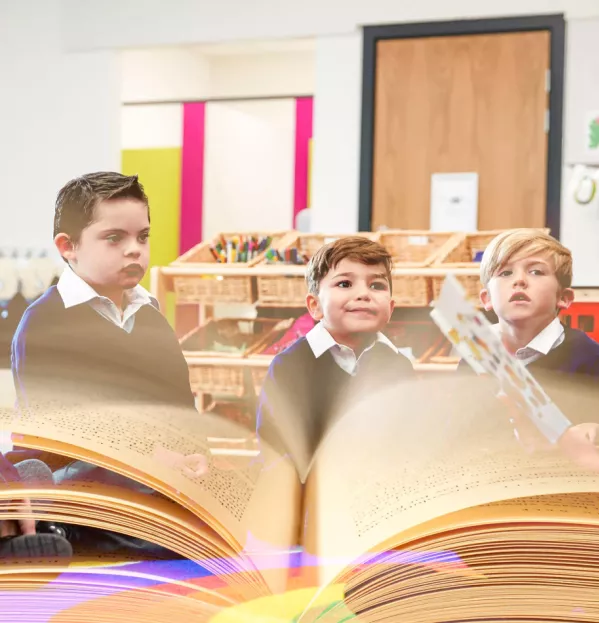
- Home
- Teaching & Learning
- Secondary
- How ‘faster read’ lessons can boost reading
How ‘faster read’ lessons can boost reading

We know that regular reading is one of the best ways to improve literacy - but try telling an 11-year-old with a reading age of 8 to do it daily, and see how far you get.
Three years ago this was the problem I was facing: 56 per cent of our Year 7 students had a reading age below their actual age. Despite already having lots of strategies in place - library lessons, reading homework, a literature-heavy English curriculum, reading fluency interventions and a school-wide reciprocal reading strategy - these students just didn’t want to read.
When searching for a way to change their minds, I came across a promising study from the University of Sussex, which involved English teachers reading two whole novels at a faster pace than usual in 12 weeks with their “average and poorer readers”. The idea was to just read, without stopping every few pages to do analysis, questions or writing.
The researchers found that, as a result of this, students made 8.5 months’ mean progress, with poorer readers making 16 months’ progress.
Read more:
- Reading ages: what does the research say?
- How a baseline reading test could transform whole-school literacy
- How to lead on whole-school literacy
I was instantly inspired and wanted to give it a go. And so we changed our key stage 3 English curriculum in the autumn term and introduced reading two novels back-to-back with all classes.

The books varied between year groups, and the choice was mostly determined by what we had in school and what was available on the virtual reading platform that we subscribe to. I modelled the approach and delivered a “faster read” lesson to all English teachers to ensure consistency across classes.
Increasing reading for pleasure
We decided that five lessons a fortnight would be “faster read” lessons, with the following format:
- Students complete a “do now” vocabulary recap from previous reading.
- Students complete a “review now” activity to check for understanding from previous reading.
- The teacher reads the novel, only pausing to clarify vocabulary, to question understanding and to ask for predictions (this is important, as it gets students to draw on their wider knowledge).
- The lesson ends with a five-minute silent writing task: for example, a summary or creative writing
For these lessons to be effective, the reading pace has to be kept up, reading must be the main activity and the pauses need to be short and focused. To offer variety to the format, teachers can encourage oracy by grouping students to review using “think, pair, share” or use mini whiteboards and choral responses for vocabulary clarification. There’s strictly no writing (except with the mini whiteboards) until the end of the lesson.
More advanced readers can read along with their own copy of the book. However, for the students with a reading age significantly below their age, attempting to follow the text can be a distraction and is not recommended.
Improved reading skills
So, how well has it worked? In the first year we saw a demonstrative impact by Christmas. Reading ages rose across all the year groups, and a whole-school survey showed that teachers in other subjects could also see evidence of improved reading skills in their lessons.
There was also a significant increase in book borrowing at KS3 from our library. Students were clearly excited for the next lesson, and the parent of one particular student who “hated” reading told us that their son had put a book on their Christmas list.
We’ve been doing this every autumn term for three years now, and our Year 9s have gone from being “a literacy concern” in Year 7 to students whom we now expect to thrive in their GCSEs. This year, at the end of Year 7, we saw net reading age increases range from four months to 46 months, and those gains were echoed for all year groups, with teachers across subjects reporting improved assessment scores for those with the lowest reading ages.
If you wanted to introduce something similar, I’d say it’s important that the whole year group read the same book and all teachers are on board with the “faster read” format. You don’t need to buy a new set of books; it’s the teacher’s enthusiasm and engagement with the story that is the most important thing.
In the spring and summer term, when these lessons stopped, the reading buzz did die down somewhat. However, this is a powerful way to start the year and get students hooked on reading all year round.
Sonja Nunneley is assistant headteacher at Fearnhill School, Hertfordshire
You need a Tes subscription to read this article
Subscribe now to read this article and get other subscriber-only content:
- Unlimited access to all Tes magazine content
- Exclusive subscriber-only stories
- Award-winning email newsletters
- Unlimited access to all Tes magazine content
- Exclusive subscriber-only stories
- Award-winning email newsletters
You need a subscription to read this article
Subscribe now to read this article and get other subscriber-only content, including:
- Unlimited access to all Tes magazine content
- Exclusive subscriber-only stories
- Award-winning email newsletters
- Unlimited access to all Tes magazine content
- Exclusive subscriber-only stories
- Award-winning email newsletters
topics in this article



